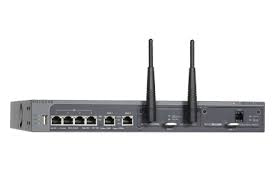
Dear Ms. Smartphone: When the router for my house ‘died’ last week, my wife and I went to a big box store to replace it. Fortunately, they had one in stock. When I opened the box the instruction book was not included! On a piece of cardboard a single line of text instructed us to download an app to our phone. This app, when downloaded, would walk us through the setup. But, that was not feasible because our phones needed Wi-Fi service to get the app installed. We have a fairly good cellular plan for home and 5G ready phones, but still not enough service as that download just spun and spun. Fortunately, we had kept the instruction booklet from the old router and on a lark, we tried to reset it, following the instructions in this paper booklet. Voila! It worked. The next day I returned the new router (unused) to the big box store and complained about the set up requiring me to download an app, they were indifferent. Mack, Tiburon
Dear Mack: This is what they call a Catch-22. You thought you needed a new router to broadcast a Wi-Fi signal through your home, but there was no way to get this Wi-Fi signal until you set up the router! When you went to return the device, the big box store didn’t care.
Tragically, the experience you describe is becoming way too common. In lieu of “where is the instruction manual” and producing a working set of print directions, tech companies shift “onboarding” to the Internet. In lieu of print, they produce a YouTube type video, and, in the case of routers, separate onboarding apps for Android and iPhone.
Look Here? Or There?
I can’t answer for these companies. There are three possible reasons I see that they engage in this shenanigan. One is techno-exuberance. The engineers may subscribe to the Elon Musk ethic that “any product that needs an owner’s manual to work is broken.” Perhaps router engineers are not so versed in telecommunications after all! They need to step outside their warp-speed data bubble to follow how their products might connect (or do not) in the real world. Shame!
The second reason, again so narrow, is that this tech company imagines they are a better corporate citizen and a more sustainable enterprise when they do not need to print set-up directions. Did they have a Christmas tree in their offices or at home? Have they forgotten that trees are renewable?
The third reason that such companies- ones that produce routers and like-minded electronic devices, make you depend on your phone- could be more nefarious. If you are able to download their setup instructions to your smartphone, then these companies are able to get your digital credentials. They can associate your phone number, the IP address that you login from, your email, and more. It’s not an equal data exchange for you!
Reaching Out for You?
Now, such companies probably have a different perspective, and believe that they can contact you should there be a product recall , warranty work,or a product update. Chances are they have designed a good product and will not need to trace you. More likely, they are seeding their ‘relationship marketing.” Except that you, the owner of this tech device, are not wanting, or needing, this seed! Consumers do not generally seek relationships with black boxes that come in cardboard boxes. Wall St. Journal writer Matthew Kronsberg makes the point that a paper manual can do things that a screen can’t: it doesn’t go to sleep when you are (building something), and it can’t be hurled across the room in a fit of frustration without shattering into a million pieces.
Where is the Instruction Manual?
I am sorry for the inconvenience you suffered (the big box store probably parroted the same line) but I mean this sincerely. When I teach classes on the iPhone and Android, I am aghast at the number of students who do not know where to look for basic controls. Their phones do not come with instructional books, and they are embarrassed about asking for help. So, for example, they miss incoming calls when the little sound toggle is switched to off, not on.
If tech is truly friendly, then new smartphones and routers need to be packaged with an owner’s manual. And surprisingly, most flip phones still do. At the turn of the last century, not everyone was literate, so the philanthropic set up public libraries. If there are no printed instructions says this English journalist, then we need to establish public workshops so everyone has the chance to investigate, repair and more deeply appreciate their mobile devices.

Leave a Reply
You must be logged in to post a comment.